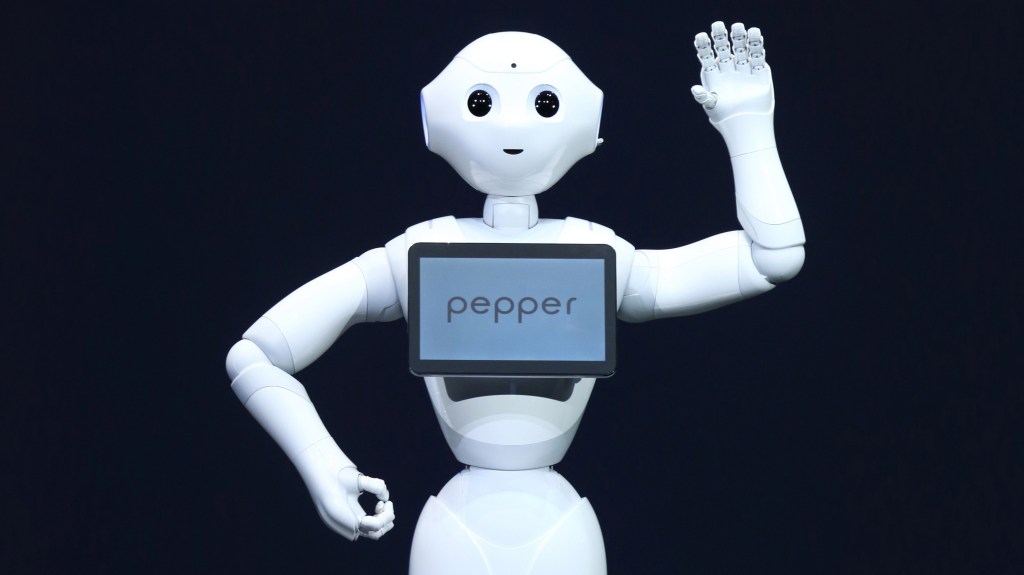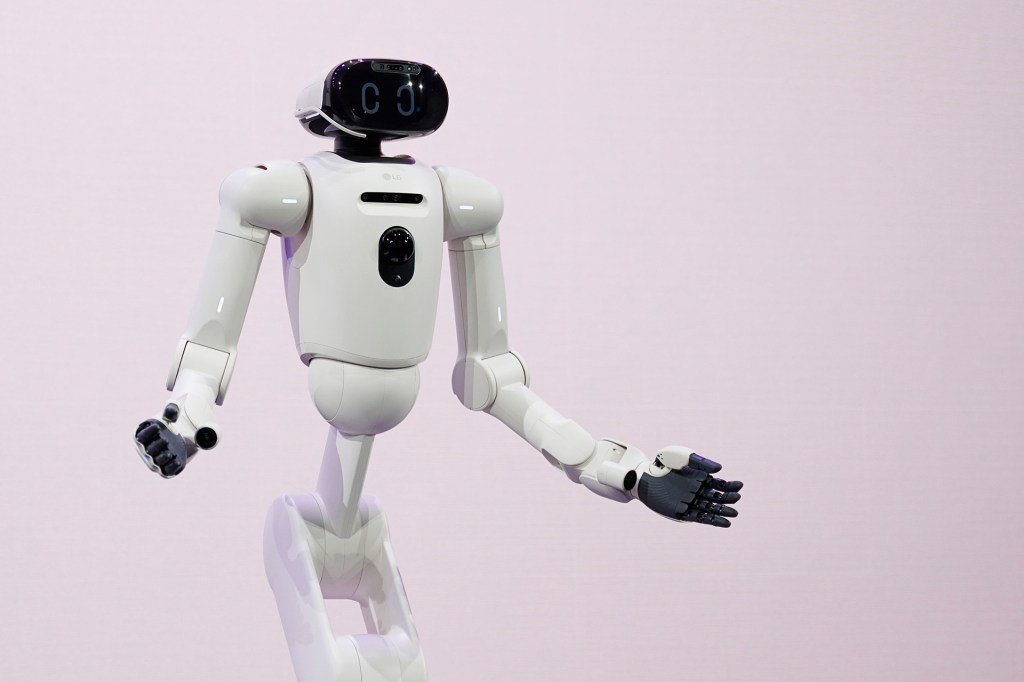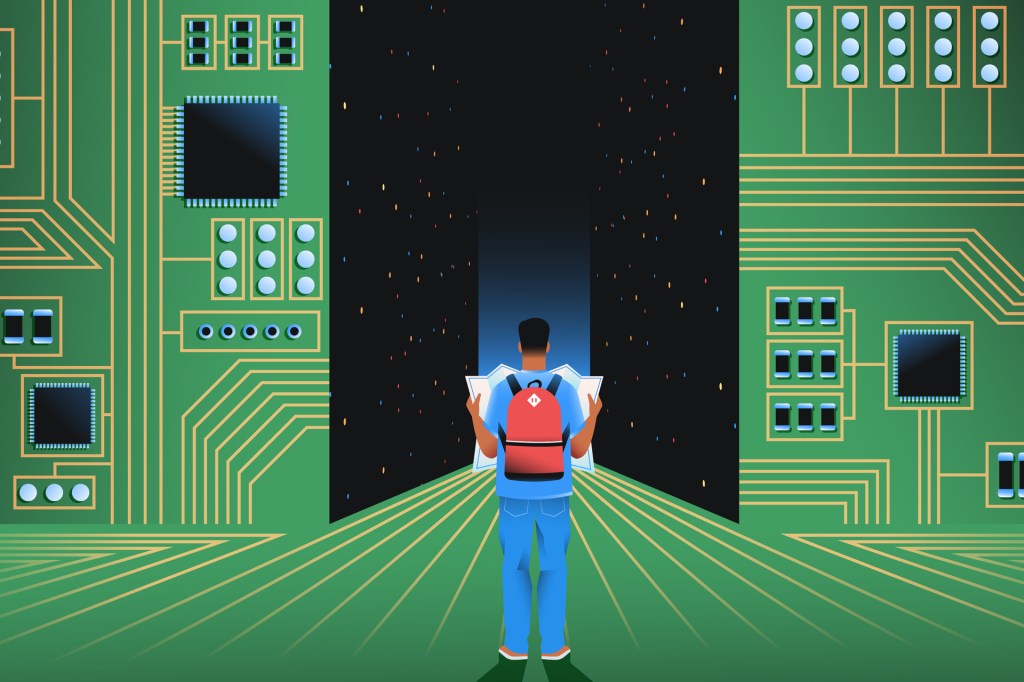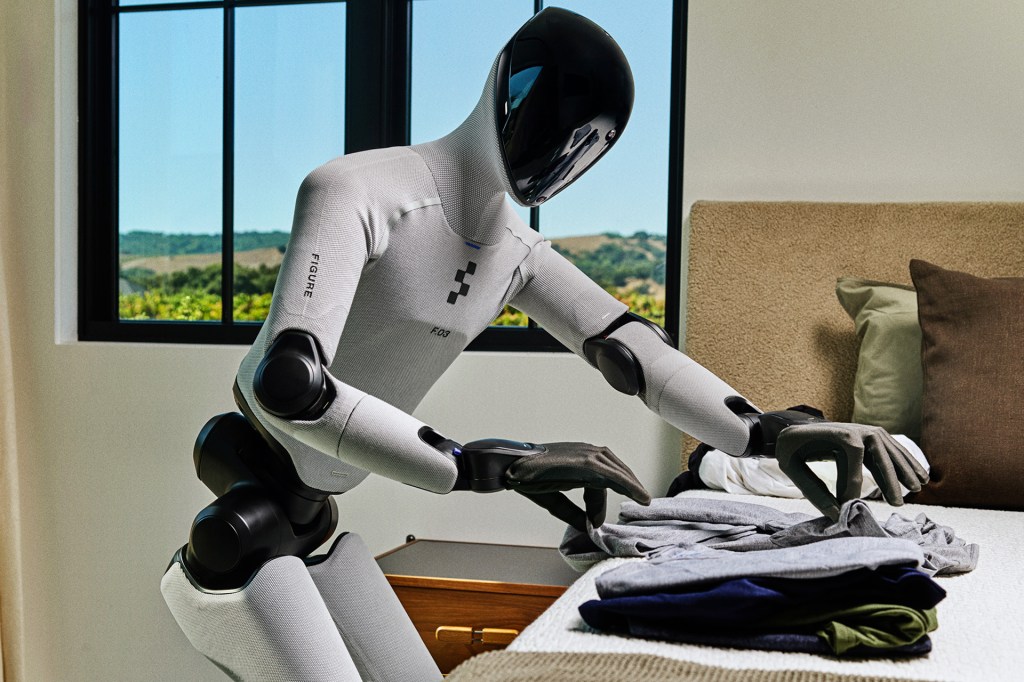Robots at Work
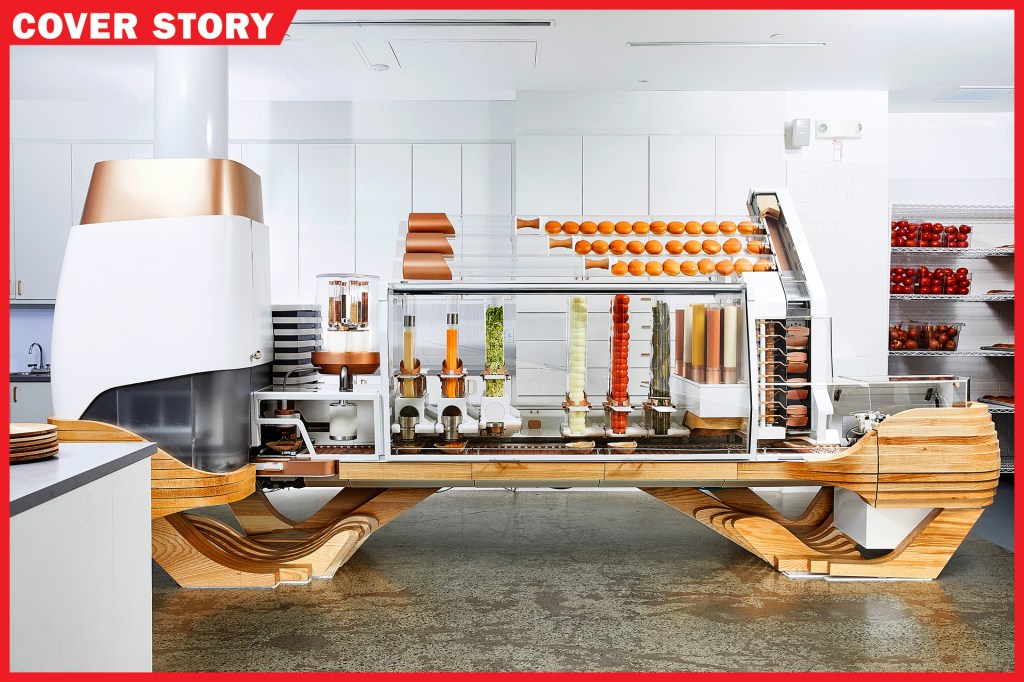
When he was a kid, Alex Vardakostas helped out in his parents’ restaurant. “As soon as standing on top of a milk crate made me tall enough to reach the counter, I was making sodas for customers,” he told TIME for Kids. Before long, Vardakostas was working the grill alongside adult employees. He estimates he’s flipped 50,000 burgers.
Now, Vardakostas co-owns a burger joint. It’s a restaurant called Creator, in San Francisco, California. But he doesn’t stand over a grill flipping burgers. Neither do his employees.
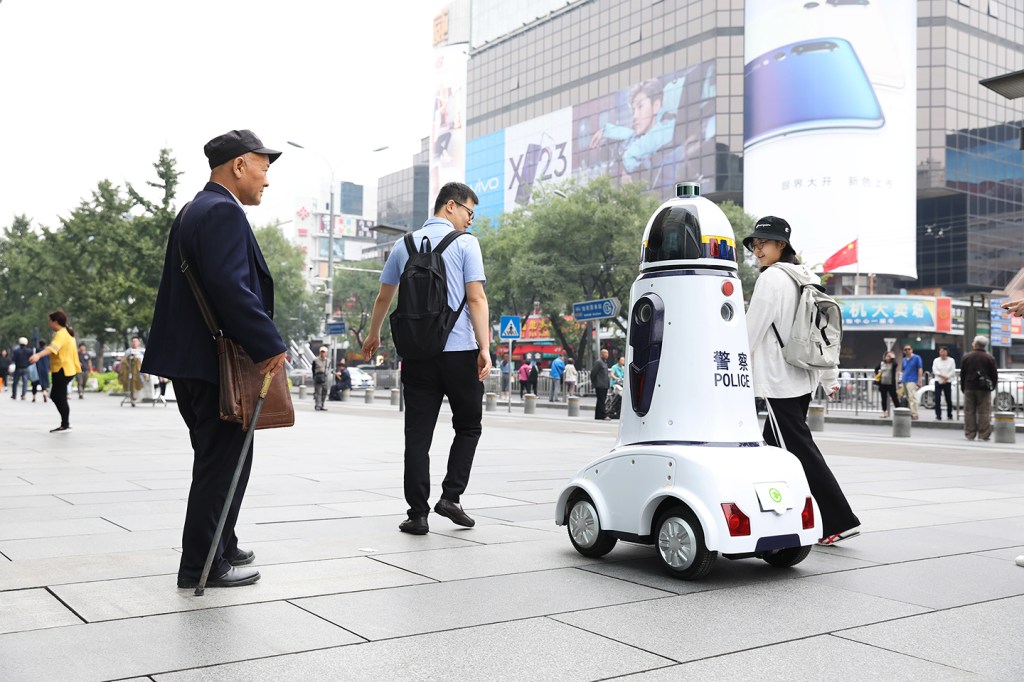
ROBOCOP A police robot patrols Beijing, China.
VCG/GETTY IMAGES
At Creator, burgers are cooked and assembled by machine. Vardakostas engineered
engineer
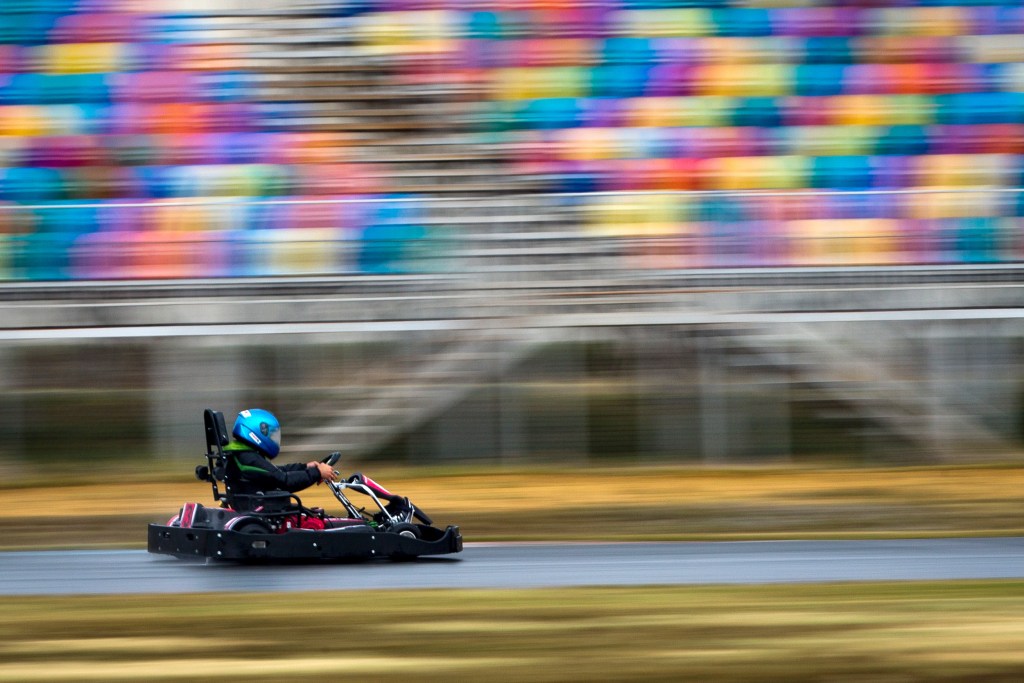 SERGEI MALGAVKO/TASS—GETTY IMAGES
to plan or build something
(verb)
My mom and I engineered a go-cart.
a device. It grinds meat, cuts vegetables, grates cheese, and applies seasonings. The end result tastes just as good as—or better than—a burger made by hand. It costs less, too. That’s because it’s less expensive to maintain
maintain
SERGEI MALGAVKO/TASS—GETTY IMAGES
to plan or build something
(verb)
My mom and I engineered a go-cart.
a device. It grinds meat, cuts vegetables, grates cheese, and applies seasonings. The end result tastes just as good as—or better than—a burger made by hand. It costs less, too. That’s because it’s less expensive to maintain
maintain
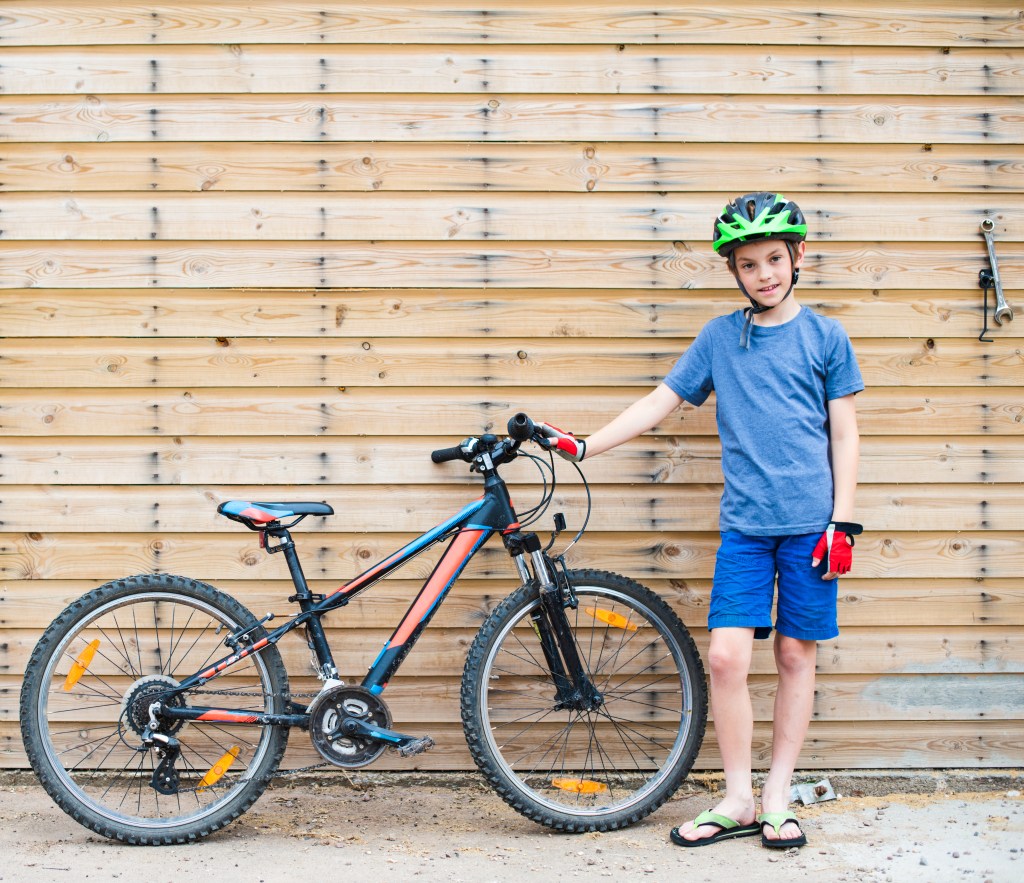 RAWPIXEL/ISTOCK—GETTY IMAGES
to keep something going; to keep something in working order
(verb)
My parents said I can have a bicycle for my birthday as long as I maintain it myself.
the machine than to pay a kitchen full of employees.
RAWPIXEL/ISTOCK—GETTY IMAGES
to keep something going; to keep something in working order
(verb)
My parents said I can have a bicycle for my birthday as long as I maintain it myself.
the machine than to pay a kitchen full of employees.
Robo-Workers
Creator is just one example of a growing trend: Automation
automation
 MONTY RAKUSEN/CULTURA—GETTY IMAGES
the state of being operated by machines or computers instead of people
(noun)
Factory workers fear their jobs could be replaced with automation.
is taking over many jobs. That means work is done by machines or computers, not people.
MONTY RAKUSEN/CULTURA—GETTY IMAGES
the state of being operated by machines or computers instead of people
(noun)
Factory workers fear their jobs could be replaced with automation.
is taking over many jobs. That means work is done by machines or computers, not people.
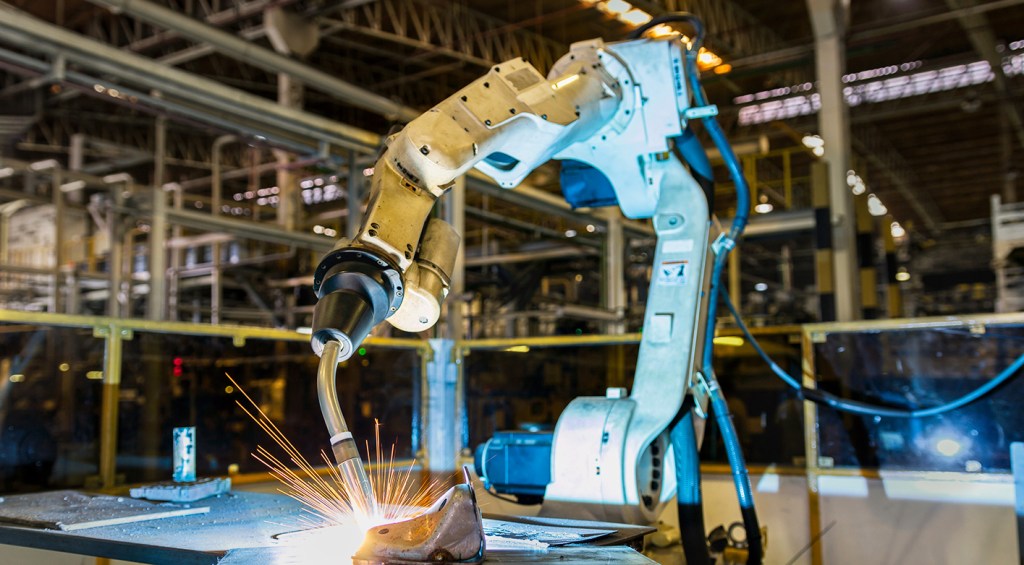
FACTORY WORKER A robot welds a car part in an automobile plant.
THOSSAPHOL—GETTY IMAGESAccording to a 2017 report from McKinsey Global Institute, between 400 million and 800 million people could be forced out of jobs by 2030. McKinsey predicts that as technology improves, some tasks will be done more quickly or cheaply by machine. So businesses will install robots or computer programs to perform them. That means there will be less work for human employees. Many people could lose their jobs. Or they might have trouble finding new ones.
“There’s going to be a big disruption in the next 10 or 20 years,” says Martin Ford. He is an author and futurist. That is someone who studies trends and makes predictions about the future.
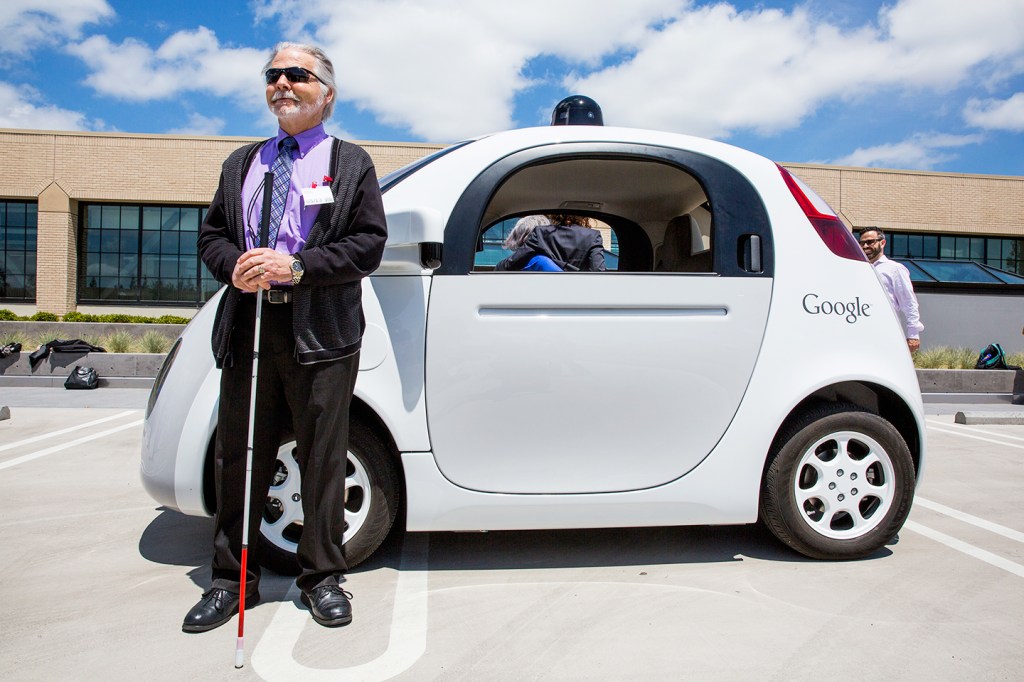
ON THE ROAD A legally blind man prepares to test-drive a self-driving car.
KIM KULISH—CORBIS/GETTY IMAGESA Human Touch
Some jobs are more likely to be automated than others. Machines can do jobs that have three qualities: they are routine, repetitive, and predictable. “It’s the kind of job where you come to work and work on the same kind of thing again and again,” Ford says. Some of these jobs pay low wages and require little education. But others pay well and demand an advanced college degree. Taxi drivers, cashiers, lawyers, and doctors all perform some tasks that can be done by machines.
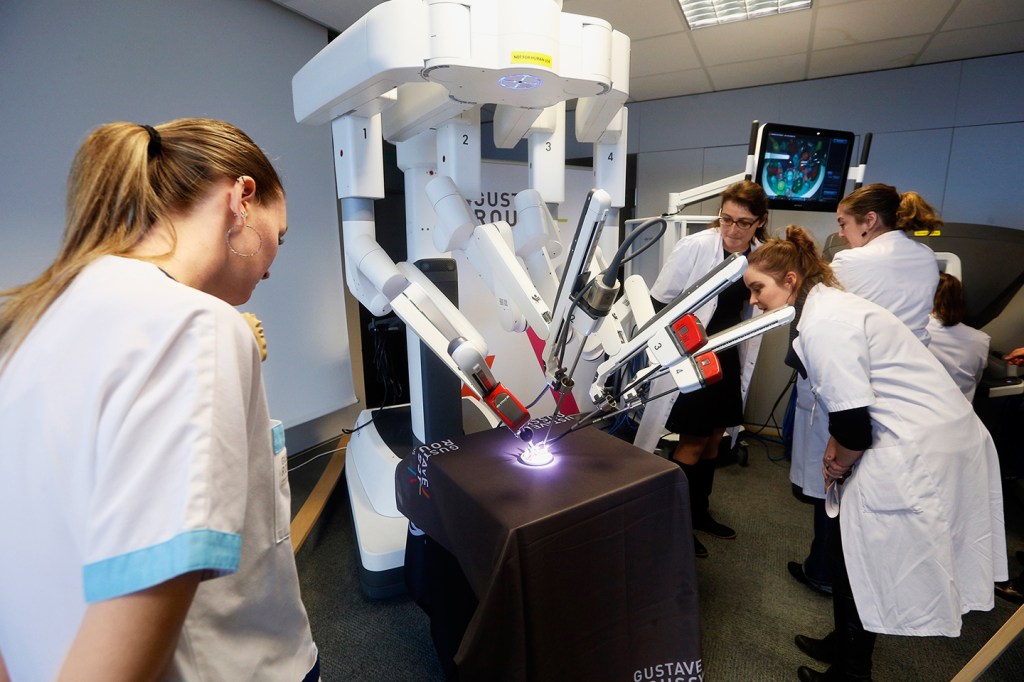
MACHINE PRECISION Medical staff gather around a surgical robot as it carries out a demonstration.
FRANCOIS GUILLOT—AFP/GETTY IMAGES
So what human jobs are safe? “Anything where you’re thinking outside the box and coming up with new ideas,” Ford says. “Or things that involve interacting with other people, having empathy
empathy
 CHARLY TRIBALLEAU/AFP—GETTY IMAGES
the ability to understand another's feelings
(noun)
Reading helps you develop empathy.
, and building relationships.” Jobs in engineering, science, the arts, therapy, and nursing are examples.
CHARLY TRIBALLEAU/AFP—GETTY IMAGES
the ability to understand another's feelings
(noun)
Reading helps you develop empathy.
, and building relationships.” Jobs in engineering, science, the arts, therapy, and nursing are examples.
Stop & Think! How does the writer help a reader visualize robots at work? How does word choice affect a reader’s response to the topic?
Assessment: Click here for a printable quiz. Teacher subscribers can find the answer key in this week's Teacher's Guide.





